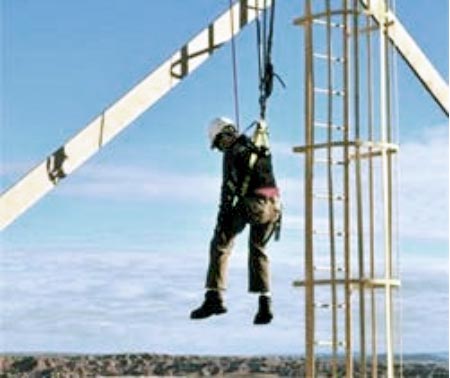Suspension Trauma
When a worker is suspended in a fall harness, the body has no way of going horizontal. The blood keeps pooling and cannot flow properly. This is suspension trauma. And unless the worker is rescued promptly, venous pooling and orthostatic intolerance occurs. This may result in serious damage to the brain, kidneys, and other organs.

Symptoms to Watch For:
Suspension trauma is relatively rare, but fallen workers awaiting rescue should be closely monitored for suspension trauma symptoms.
Common symptoms include:
• Faintness;
• Breathlessness;
• Sweating;
• Paleness;
• Nausea;
• Dizziness;
• Hot flashes;
• Unusually low heart rate or blood pressure;
• Increased heart rate; and
• Loss of vision
Fall Prevention…Deserves Your Attention!!!
Download flyer: STOTW_505_Suspension_Trauma.pdf (873.22 kb)
Download Spanish flyer: STOTW_505_Suspension_Trauma_esp.pdf (873.72 kb)

